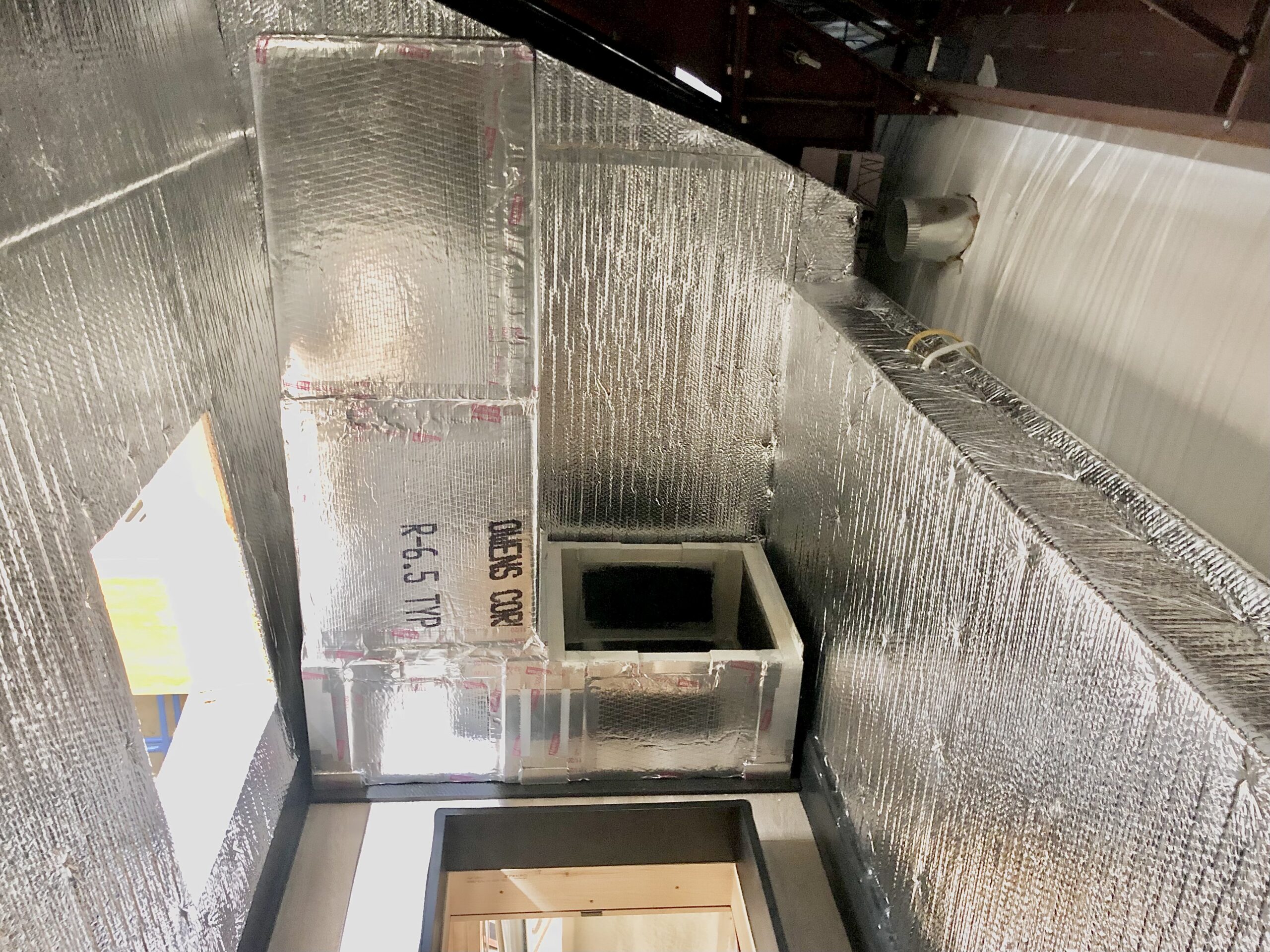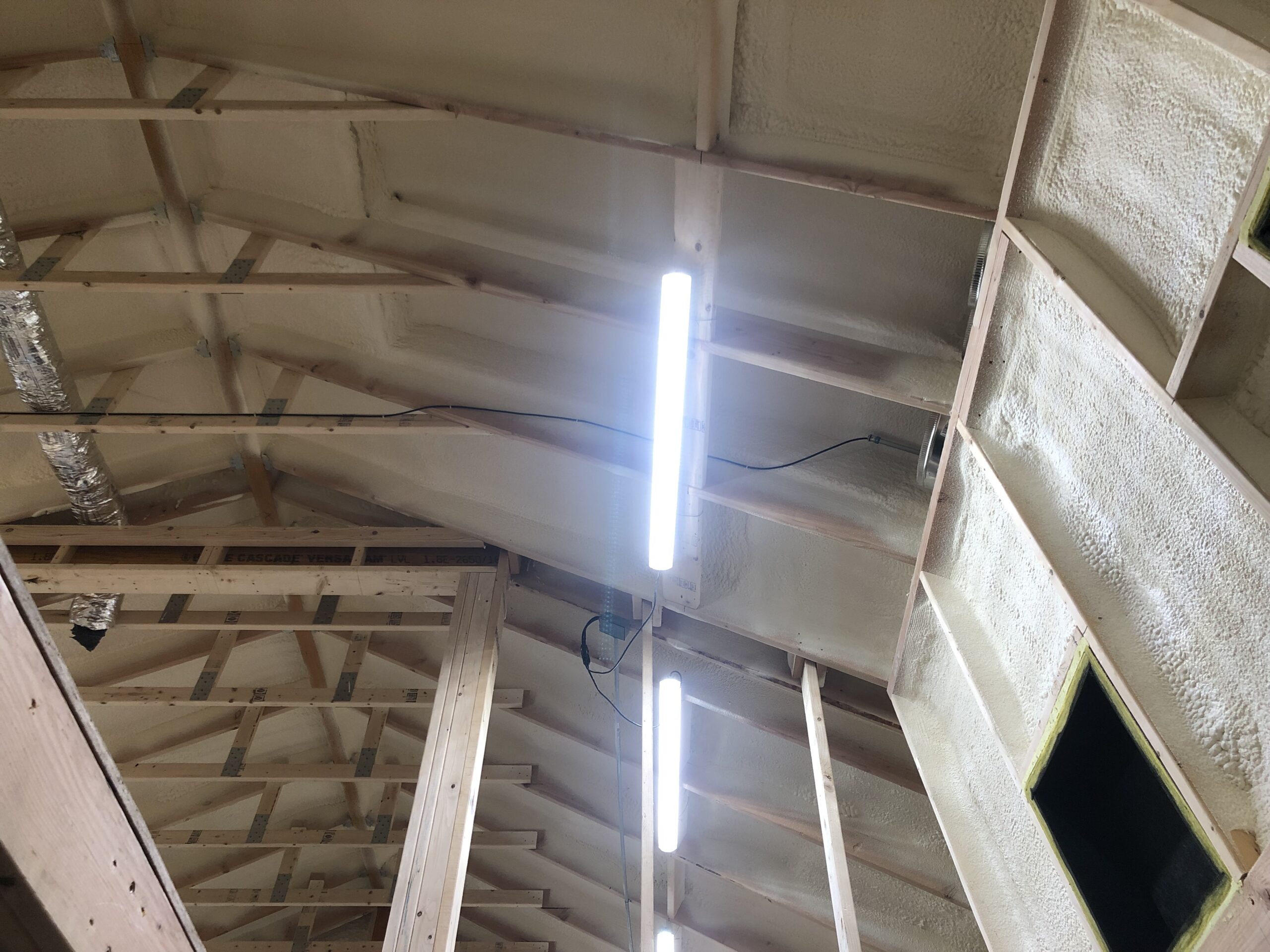Over the past few weeks, I’ve been wiring up outlets.
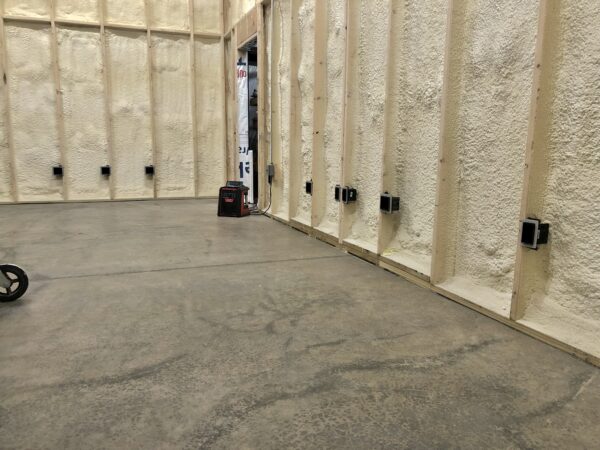 I used a laser level to place the boxes, since the floor has a 3/8 in. dip in the center that I didn’t want to carry over to the boxes.
I used a laser level to place the boxes, since the floor has a 3/8 in. dip in the center that I didn’t want to carry over to the boxes.
First I went around and placed all the boxes. This often required removal of nearby closed-cell foam, which slowed me down.
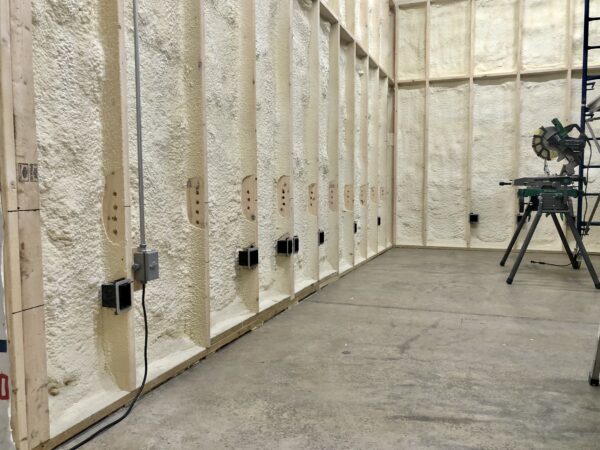 I allowed up to 6 x 12 gauge conductors or 9 x 14 gauge conductors in each 3/4 in. hole.
I allowed up to 6 x 12 gauge conductors or 9 x 14 gauge conductors in each 3/4 in. hole.
I then drilled the cable routes, which again, required more foam removal.
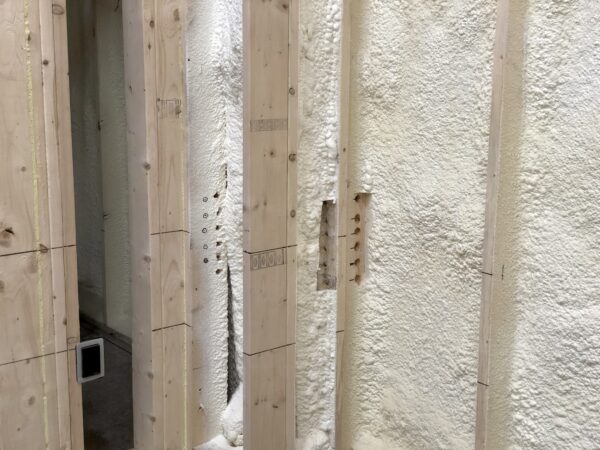 Pulling wires though such zig-zagging holes would prove to be challenging.
Pulling wires though such zig-zagging holes would prove to be challenging.
There were some routes that were tricky, as they needed to pass through multiple consecutive corners.
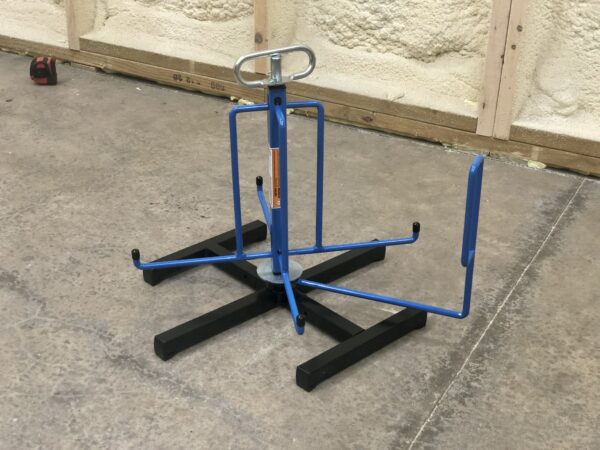 This tool is configurable to work with either Romex or generic spools with a ~1 in. inner-hole.
This tool is configurable to work with either Romex or generic spools with a ~1 in. inner-hole.
For pulling wire, I invested in a special tool for feeding wire from a spool.
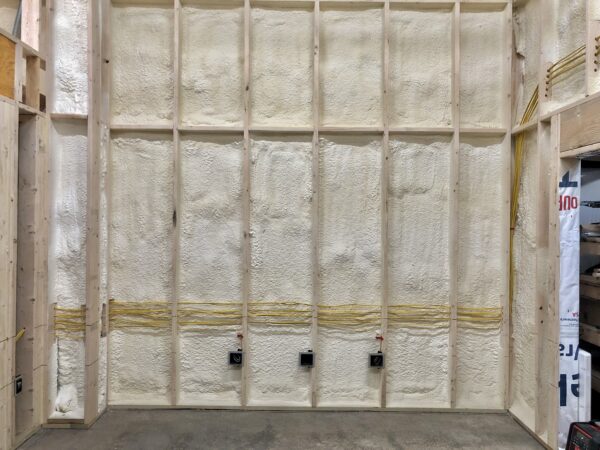 The boxes were laid out horizontally to be as close to symmetrical placement on each wall as possible.
The boxes were laid out horizontally to be as close to symmetrical placement on each wall as possible.
Because I placed the wire routes carefully, they ended up lining up nicely making them easier to pull.
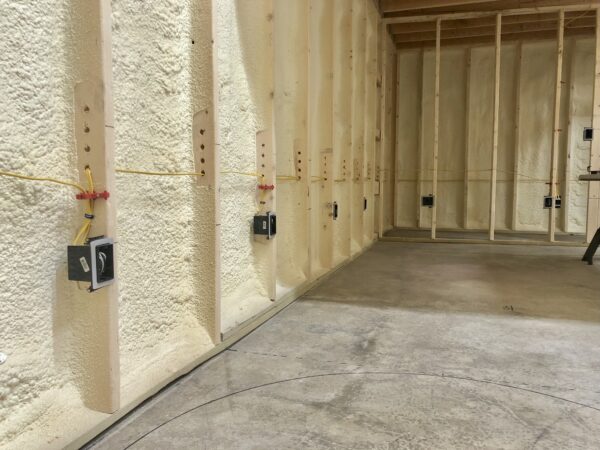 I used multi-cable “staples” to guide wires in many locations, but still stapled within 6 in. of each box entry per code.
I used multi-cable “staples” to guide wires in many locations, but still stapled within 6 in. of each box entry per code.
While there are some single outlets that share a circuit with another, most two-gang boxes have their own home run.
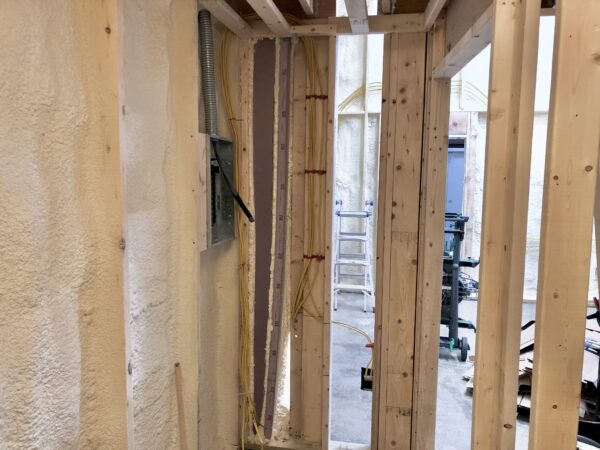 Some wires will also enter the box from the bottom, but given how many circuits I’m packing into a small panel, it’s good to distribute them.
Some wires will also enter the box from the bottom, but given how many circuits I’m packing into a small panel, it’s good to distribute them.
Many of the wires were routed through the soffit and down toward the panel.
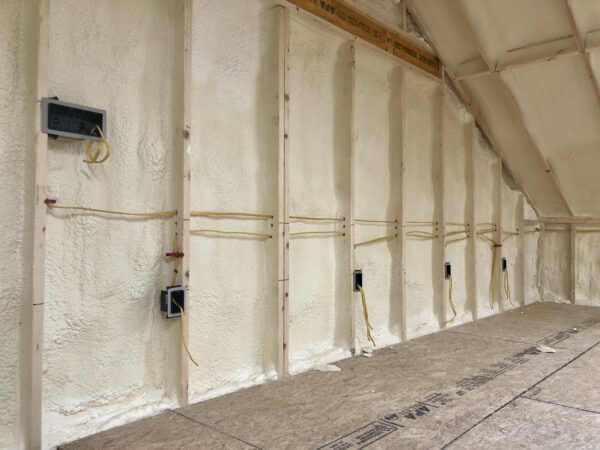 I used 12/2 wire for all outlets, which cost a little more, but thankfully I purchased most of the wire before copper doubled in price.
I used 12/2 wire for all outlets, which cost a little more, but thankfully I purchased most of the wire before copper doubled in price.
In the loft, one set of outlets are switched, which made the layout a bit more complex.
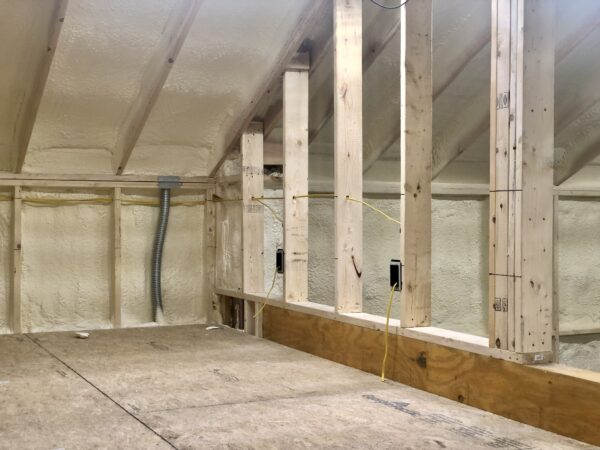 The obvious exception to the symmetry is the overlook area.
The obvious exception to the symmetry is the overlook area.
The outlet placement is again symmetrical from left to right.
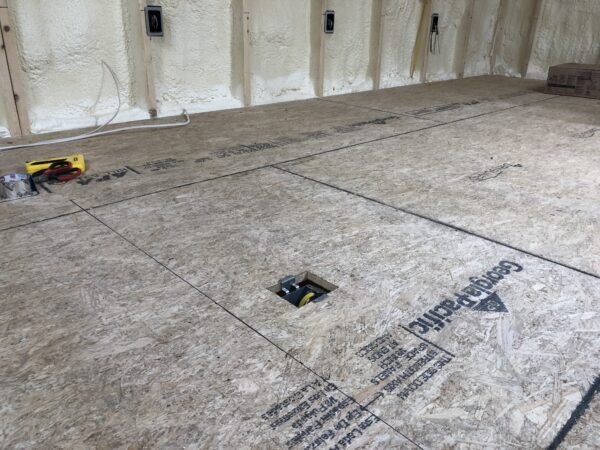 This will likely have all sorts of uses, but at minimum be used for a floor lamp.
This will likely have all sorts of uses, but at minimum be used for a floor lamp.
I added an outlet in the loft floor under where the couch will go.
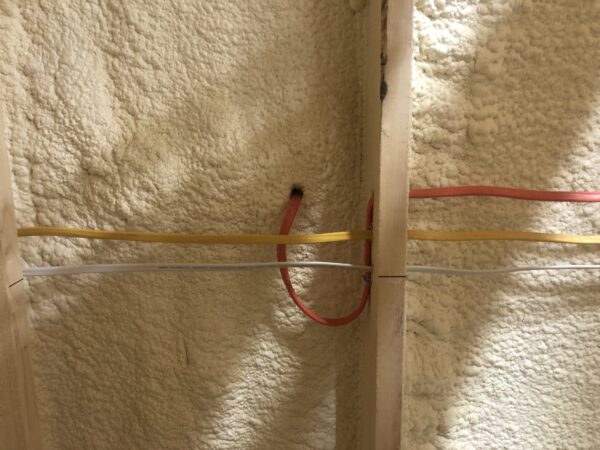 This run required 10/3 wire carrying 240v.
This run required 10/3 wire carrying 240v.
I also ran power to an exterior junction box for the heat-pump outdoor unit.
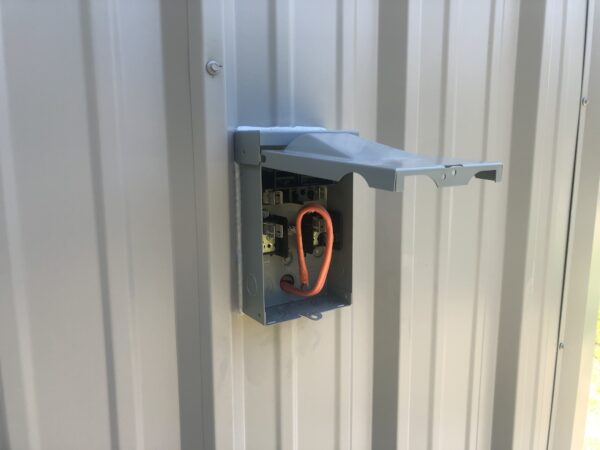 Drilling and feeding wire through this hole was very tricky, but I got lucky and it worked out well.
Drilling and feeding wire through this hole was very tricky, but I got lucky and it worked out well.
This type of box has a safety shutoff, but not a breaker.
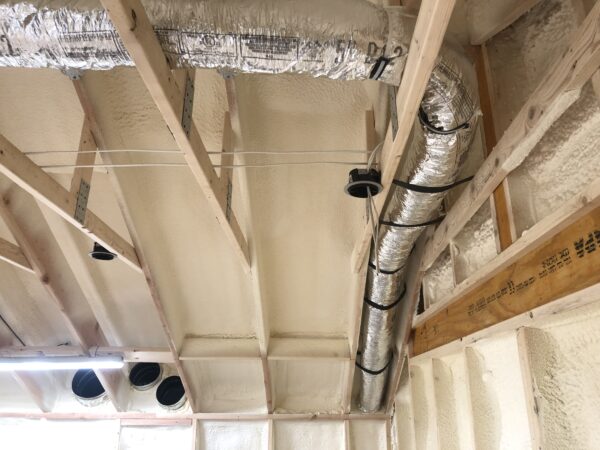 All 4 smoke detectors are wired together so they can trigger each other.
All 4 smoke detectors are wired together so they can trigger each other.
I then wired up the smoke detectors.
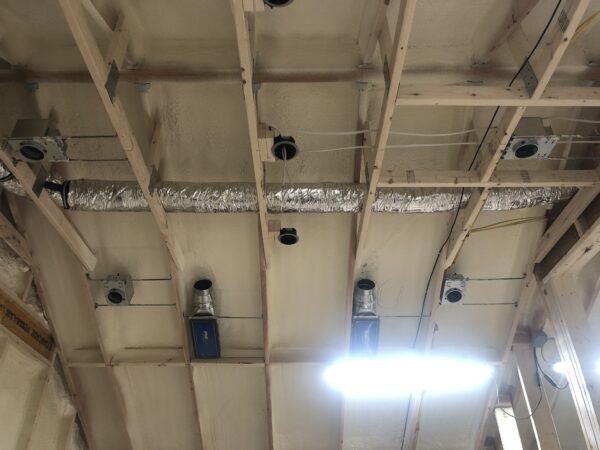 Symmetrical placement required minor a modification of a collar-tie because in the model I had placed that collar tie on the other side of the rafter.
Symmetrical placement required minor a modification of a collar-tie because in the model I had placed that collar tie on the other side of the rafter.
Finally I placed the remaining can lights and then wired those up as well.














